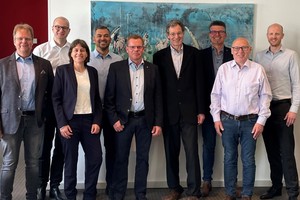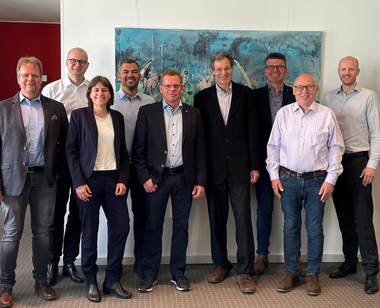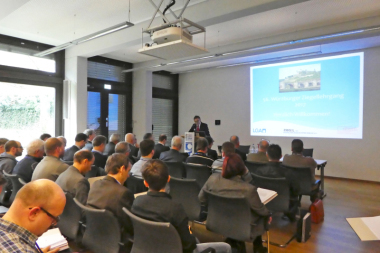Kiln utilization between earth gas and flue gas - Spring Advisory Board Meeting of the Research Association of the Brick and Tile Industry e. V.
On May 4, 2022, the Advisory Board of the Research Association of the Brick and Tile Industry (Forschungsgemeinschaft der Ziegelindustrie e. V.) met for its regular spring meeting at the Reinhardtstraßenhöfe Conference and Congress Center in Berlin-Mitte. The presentation program of the hybrid event focused on the conditions and potential for improvement in the future use of kilns. In addition to an analysis of the current and future supply situation with natural gas, the speakers discussed various approaches to increasing energy and heat efficiency in kiln use.
Dr. Ludwig Möhring, General Manager of the German Association for Natural Gas, Petroleum and Geoenergy (Bundesverband Erdgas, Erdöl und Geoenergie e. V.), warned that the old normal prices for natural gas will not return. He added that the quantities of gas available on the market were not yet limited. Rather, he said, the sharp rise in prices was an expression of the great uncertainty about the future availability of gas. In the medium term, he said, the development and expansion of LNG terminals and pipelines could ensure a basic level of gas supply. However, the costs are significantly higher than those of pipeline gas. The further price development for natural gas cannot be predicted, as it depends on the actual demand from competing users. What is certain, however, is that they will be significantly higher than the previous level, which was supported by particularly cheap Russian natural gas.
Not only the development of gas prices, but also the increasing requirements of environmental protection make efficiency improvements in furnace operation inevitable. One retrofit option presented by Thomas Alten, Managing Director of Keramischer OFENBAU GmbH, was the Enervit firing system developed in-house. This makes it possible to reduce the energy consumption and CO2 emissions of oxidizing, gas-fired roller and tunnel kilns by up to 50 percent. In addition, the system allows greater flame stability and is suitable for the use of alternative gases and hydrogen. The retrofit costs would have paid for themselves after an average of 1.5 years under 2020 conditions. ZI previously reported on this in its 04/2020 issue.
A different approach was presented by Robert Sakko, Director Technology of HeatMatrix Group B. V. Fouling and corrosion are a well-known hurdle in using flue gas to recover heat. Soot can foul the furnace system, and condensing acids, especially sulfuric acid, can cause corrosion damage. A polymer-based heat exchanger developed by the company can prevent this. The polymer binds both soot and acid particles. The effectiveness of the polymer heat exchanger has been proven in several series of tests, he said. ZI previously reported on this in its 01/2019 issue.
Crucial for the efficiency and effectiveness of the firing process as well as the quality of the fired products is certainty about the quality of the delivered gas. This will become increasingly unpredictable in the future, thanks to increasing feeds of methane, biogas and hydrogen. One way to achieve certainty in the face of fluctuating gas conditions was presented by Matthias Bockbreder, of swb Services AG & Co. KG, in his presentation: the Blue Eye measuring device. A practical test at a brick company (Röben) showed that the device measures the gas quality reliably and at a much lower cost than conventional methods. According to the series of measurements, the precision of the viscosity measurement was 99 percent, and the device detected fluctuations in gas quality very quickly.
The Research Association of the Brick and Tile Industry (FGZ) coordinates cross-company, practice-oriented basic research for the brick and tile industry. The FGZ brings together companies, research institutes and suppliers to the industry. The main objectives of the research activities include the continuous improvement of production technology, construction application technology and environmental protection. The main tasks are to identify measures for further reducing production and energy costs, damage-free construction, further enhancing product quality and promoting innovative developments.



